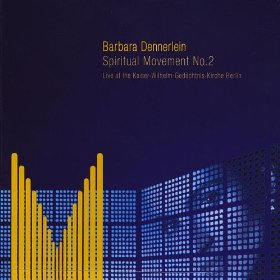Billy Bang. Period. (See details several paragraphs below.)
Tonight I saw something straight out of the past. Mose Allison played more than 20 songs in 70 minutes with no written set list, calling each tune from his book of music by its number so the bass player, Rich Syracuse, would know which song to play. Allison remembered all the lyrics, played 20+ interesting solos, and kept the audience charmed and smiling for the whole set.
Mose Allison is a quiet institution. He’s been around so long that he’s part of America’s musical fabric, and he still has such a following that the line was halfway around the block 90 minutes before showtime. It was worth the wait, as Mose played one great song after another: “Look What You Made Me Do,” “Your Molecular Structure,” “What’s Your Movie?” “Ever Since The World Ended,” and many more. He also threw in some songs by other writers, including “Fool’s Paradise” by Johnny Fuller and a very reharmonized “You Are My Sunshine,” by former Louisiana governor Jimmy Davis.
One strange element of the sound was a bass rasp on the low string that jumped out every time Syracuse plucked it, but otherwise the sound was fairly good in the sometimes cavernous Kilbourn Hall. A friend of mine once described watching jazz there as watching “jazz in a diorama.” While it often has that feel, the best performers can transcend the limitations of the space (see Allyson, Karrin and Allison, Mose).
NOTE: Three paragraphs until Billy Bang.
Outside on the free Jazz Street Stage, the reunited Respect Sextet wowed the crowd and kept them laughing. As a matter fact, Mose Allison into the Respect Sextet was a great segue, as both shows showed the value of a sense of humor in music. It was the classic Respect lineup: Josh Rutner on sax, Eli Asher on trumpet, James Hirschfeld on trombone, Red Wierenga on piano, Ted Poor on drums, and Malcolm Kirby on bass, who missed the Respect show this year at the Bop Shop because he was on tour with the Campbell Brothers. As usual at a Respect show, original compositions — in the best sense of the word “original” — held sway, including Herschfeld’s “latin surf anthem” opener, a Balkan tune by Rutner, and the wonderfully titled “Beer” by Wierenga. The band members now make their home in New York City (all but Asher, who lives in the D.C. area), but they still remember their roots here in Rochester.
NOTE: Two paragraphs until Billy Bang.
The official Next Big Thing of the 2006 festival, Sonya Kitchell, filled the big tent and caused a line down Main Street outside. Back in its inaugural year, the Rochester International Jazz Festival booked a then-unknown singer/pianist named Norah Jones. Eight Grammy awards later, producer John Nugent hoped to prove his instincts again with 17-year-old phenom Kitchell. She’s good, but she struggled to overcome the big tent’s sound-swallowing atmosphere, and her airy vocals were often lost completely in the muddy mix of sound. That said, Kitchell’s songwriting was often impressive, and if she wins eight Grammies this year, you’ll know how to rate my skills as a talent scout.
NOTE: Up next is the good bit, featuring Billy Bang.
Every year at the festival, there’s one artist who transcends the ordinary and sends writers scrambling for adjectives. This year, no matter what happens next, that artist was Billy Bang.
Violinist Bang was joined by trumpeter James Zollar, bassist Todd Nicholson, drummer Newman Taylor Baker, and pianist Andrew Bemkey. Listening to them was like someone reaching inside your rib cage and squeezing your heart. From the first note (Bang’s “Reconciliation”) to the last (“Rainbow Gladiator”), Billy commanded the room in a way few performers ever do. And the audience loved him for it. In recent years, thanks to the work of Bop Shop owner Tom Kohn, Bang has appeared in Rochester several times, both at the jazz festival and at the Bop Shop atrium. Rochester’s music lovers have embraced him, and one of the city’s leading cultural figures, choreographer Garth Fagan, has championed Bang’s music by using it as the basis for a dance piece. Bang was effusive in his praise of Rochester all night long, and he seemed genuinely moved by the intense emotion of the crowd.
The set featured one highlight reel solo after another. Nicholson’s root-to-fruit bass solo on “Reconciliation.” Zollar’s ride on Rocket #9 during the Sun Ra tribute “Jupiter’s Future.” Bemkey destroying and rebuilding the piano with a consciousness-altering two-fisted display on the same tune. Bang getting his sabroso on during the Cuban-inflected closer, which had the crowd on its feet screaming as the band tightened the screws one notch, then another, then another, leaving the audience so enraptured that the band was literally prevented from leaving the stage until they played an encore, the lovely “Rainbow Gladiator.”
With the week ahead including names like Tyner and Shorter, it may seem ridiculous to say this, but my prediction is that no individual set of music will top Billy Bang. Not this week, and not for a long time to come.
For complete information, including audio files, concert photos and more, visit rochesterjazz.com.

